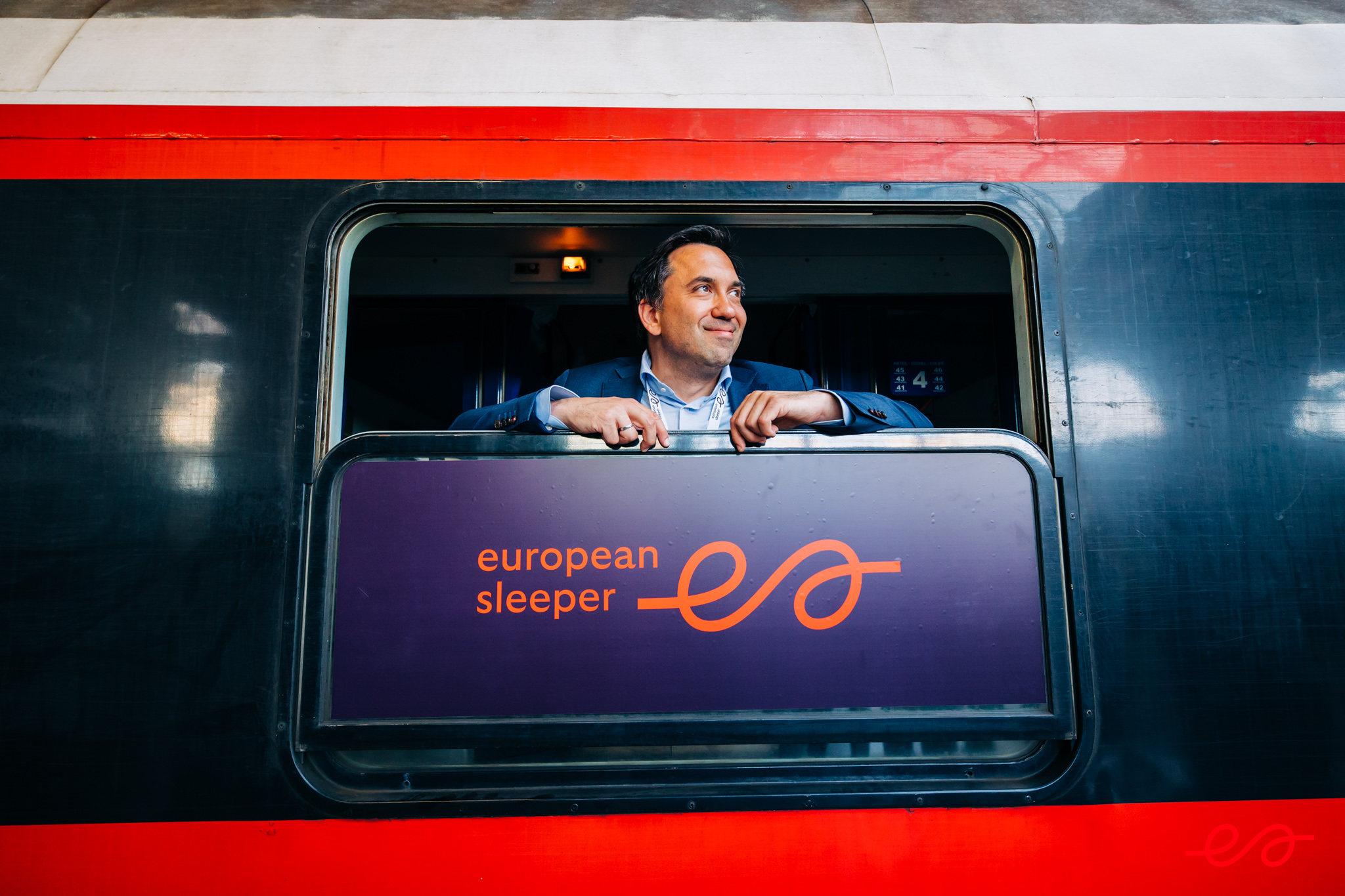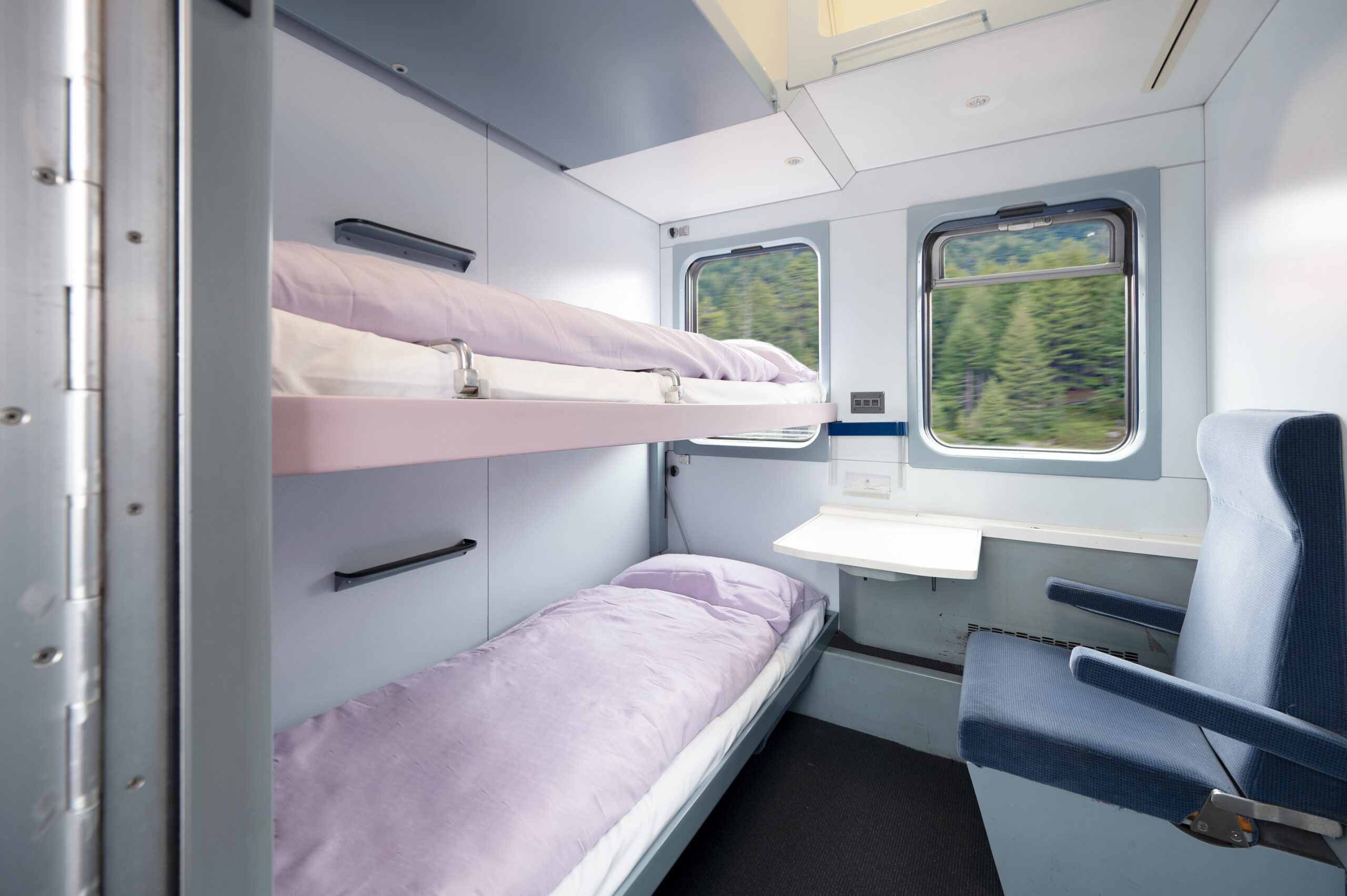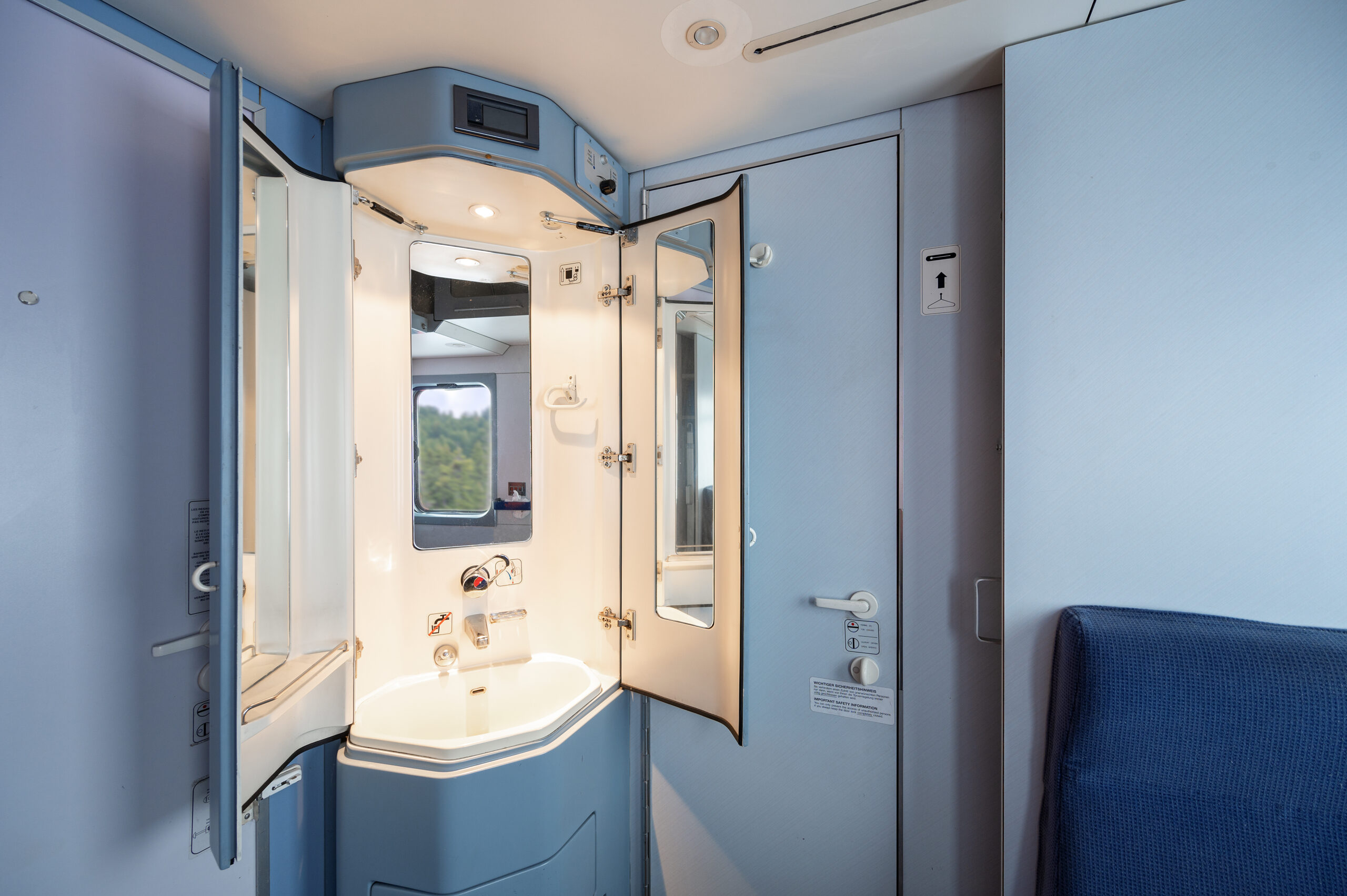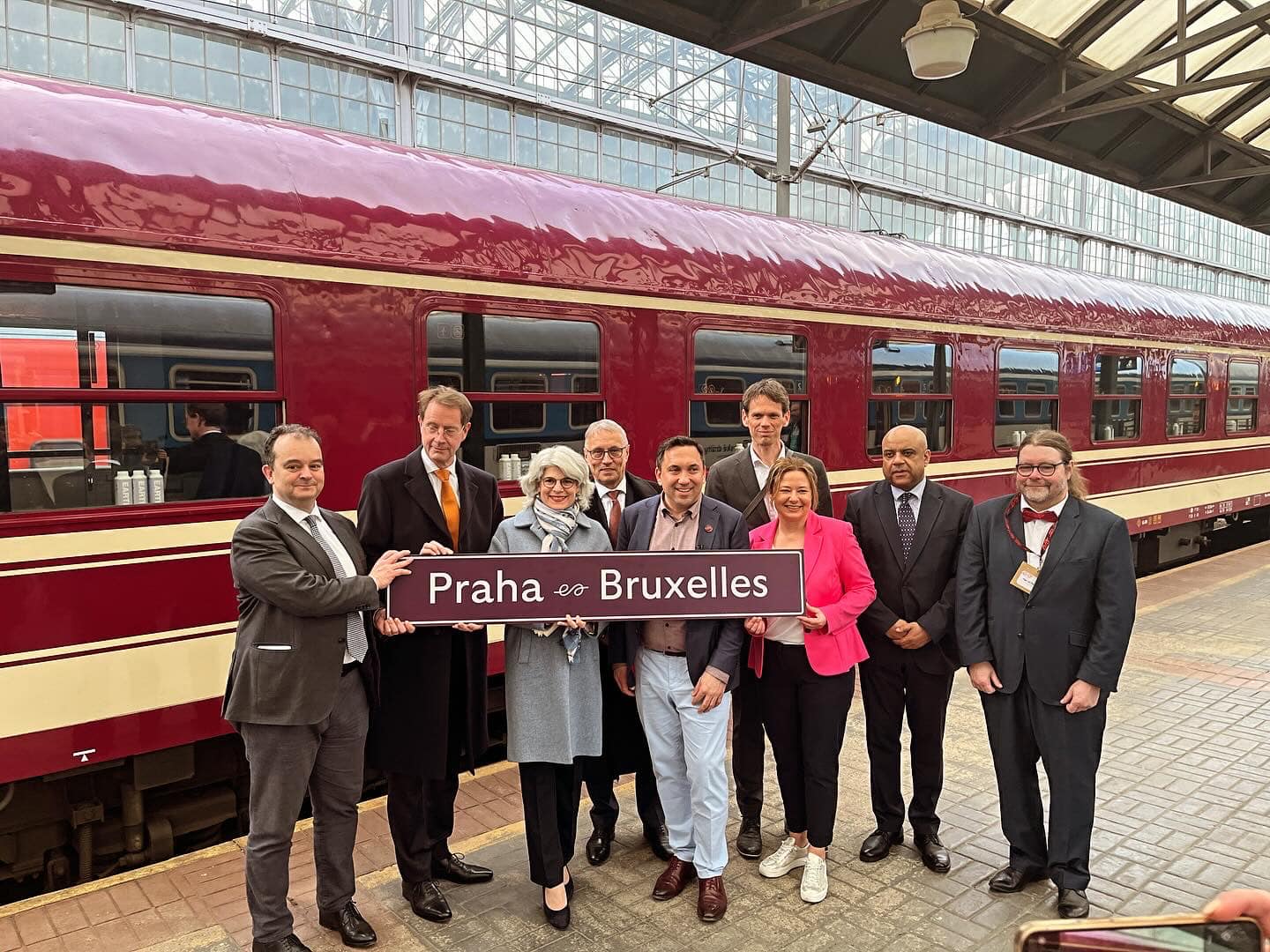While thousands of nocturnal trains depart and arrive at stations across Asia every day, the idea of a train ride under the stars lost its shine decades ago in Europe. But for those seeking more legroom, a more sustainable alternative to commercial aviation, or just to recreate some of the old romance of train travel, European Sleeper, having just completed its first year of service, is still running.
It hasn’t been a flat track by any means. In the lead-up to the company’s launch on May 23rd, 2023, there were still major challenges that needed overcoming on both the logistical and financial fronts. Lack of available sleeper train cars, difficulty connecting international timetables, and the inability to provide basic assurances of growth to prospective investors, were all present when the first European Sleeper rolled out of Brussels.
These challenges remain, says European Sleeper Founder and CEO Elmer van Buuren, but they are challenges worth addressing as the options for international travel in Europe remain limited to high-speed trains booked weeks in advance, or unfomfortable low-cost airlines that require taxi from the airport.
Since the first train from Brussels to Berlin, European Sleeper has been transporting over 55,000 passengers aboard more than 260 trains. They’ve recently inaugurated an additional service to Dresden and Prague, but they still use rented carriages, they aren’t sure what next year’s timetable will look like for the routes they already service, much less their original 2025 goal of extending down into France and Barcelona.
If one looks at their social media accounts, the scenes are incredibly positive; and they ought to be. The quest for more legroom on airplanes has gone on for so long that it has even involved government mandate. Part of what van Buuren claims is the major achievement of the first completed year of operations is that European Sleeper was offered to the market, and the market responded.

A network full of challenges
Started back in 2021, van Buuren attacked what he saw as a ‘big enough’ challenge with the experience from “countless small jobs” across a 25-year career in rail travel, including an 11-year stint with his native Netherlands Railways. This taught him firsthand the difficulty in connecting timetables across European nations.
“The discussion is ongoing,” he told WaL. “We started in Europe liberalizing the rail sector at the end of the 1980s and it’s still ongoing but it’s not yet come to fruition in the way that the European Commission at the time had in mind”.
What ended up happening is that private train companies share track capacity with public companies, and the timetables are set by government departments, all while low-cost airlines diminished the role of trains in international transit across the continent.
A perfect example of how the demands of a small train startup can get lost in translation is when European Sleeper wanted to extend down into Prague.
“The main reason we went to Berlin is because we secured the path to Prague, the main challenge here is that track maintenance work that’s going on throughout the night primarily… for many years, and the most noticeable one of those in Germany is the little bit of line between Dresden at the Czech border,” van Buuren explains.
“We managed to secure that track capacity from 2023 to 2024, but we haven’t yet been able to for 2024 to 2025, and we’re not sure if we’re going to get it”.
This track capacity must be applied for every year, and so even if van Buuren can show a prospective investor that the demand is there and the net operating revenue is substantial, he can’t show anyone that it will exist for certain in the following year. Typically, an investor will want to see short, medium, and long-term growth plans, but this application process throws a wrench in that as well.
“But we have rental contracts for carriages until 2027 so the risk is entirely on us. This is the reality of trying to startup this kind of thing in Europe at this moment: you really need to push through one step at a time,” he said. “If we had a framework agreement across the borders that would guarantee… we will get the capacity for the next 10 years, that would highly de-risk the investment and get financiers on board,” van Buuren hypothesized in 2023.
For financing, the ground was made up by mostly small investors—3,500 of them, who together bought shares worth €5 million.

Rolling with the punches
Another chronic issue has been rolling stock, i.e. the number and quality of carriages available. European Sleeper offers sleeping chair seats for the lowest cost, as well as sleeping cabins lined with “couchettes” or bunks; three to each wall, and luxury cabins with two beds and a chair.
All of these have had to be rented, or refurbished from stock dating back to as early as the 1950s, as there’s just not enough demand for sleeping carriages for any manufacturer to justify fulfilling a large order.
“I can’t say we’ve tackled it yet,” van Buuren muses. “The good news is we still exist and we’re still working on that”.
They’ve recently managed to secure an option to buy modern, second-hand carriages that the company plans to refurbish in a workshop for more rolling stock.
“The reason that people went for low-cost airlines is not because they consciously knew they wanted low-cost airlines but because the airlines were there and they offered their services and people used them,” he expained. “It’s what transport scientists call ‘autonomous growth;’ much of the travel that was done was because the low-cost airlines were there and people thought ‘Oh, I need to go to (wherever)’”.
Aside from the speed and the price, there’s virtually nothing overly-pleasent about a low-cost airline, but it’s difficult to break consumer habits, and European Sleeper has seen this with travelers continuing to choose budget airlines in huge numbers. So while it’s important to convince people that skipping the cost of a hotel and taxi for the opportunity of arriving right in the heart of a big European city at dawn would be a much nicer option for many people, it’s also about being realistic—van Buuren again.

“It’s all about expectations. Many people appreciate that it’s there, some people are really enthusiastic about the romantic aspect of it, people really love that. They take our current trains as they are even if they’re basic. People that expect a four star hotel room on rails are disappointed because that’s not what it is”.
“We have to appreciate that we can’t serve everyone at this moment, but people are really enthusiastic overall,” he says.
The biggest challenge attracting new passengers is not so much the skepticism of a night train, but an unfamiliarity with the train system at large.
“We really need to convince people into the system ‘train,’ rather than into the night train [specifically]. Once people are using international trains, they will begin to use night trains. People have questions: ‘Can I brush my teeth somewhere,’ or “How can I find my train in the station?’ We need to help them overcome this insecurity, but I think it’s much more about an insecurity about the train system than it is just the night train”.
Yet another challenge is a shrinking availability of ‘sidings,’ or tracks where trains might sit parked—a key feature of a train that operates only at night. Many old sidings are being removed in the face of increasing city development. There is a silver lining here, van Buuren explains. Because every country in Europe is doing this more or less at the same time, the first city that maintains or adds new sidings gets the added business of being a night train hub, which for the moment exists only in Brussels.
“The good thing is we’re proving we know how to do it,” van Buuren said, describing the whole ecosystem as “so big and super complicated,” but being that it’s a very personal story for him, each small step is being cherished. If it all fails in the end, he adds, it’s evidence that at least they tried.
“It’s not only that we can say ‘Hey, we know how to set up a train company, we’ve been running it for one year,’ but it’s running well and we have our hands on carriages, so the puzzle becomes clearer and clearer”. WaL
We Humbly Ask For Your Support—Follow the link here to see all the ways, monetary and non-monetary.
PICTURED ABOVE: European Sleeper Founder and CEO Elmer van Buuren in front of his train as it arrived in Prague station. PC: European Sleeper, released.



